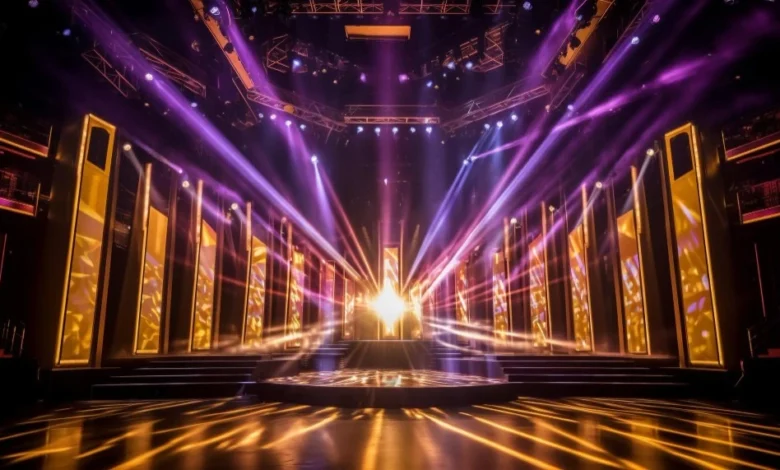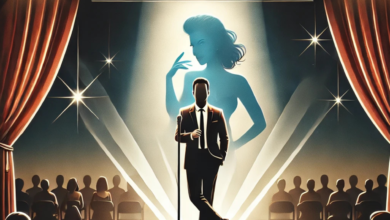Stage Lights vs Traditional Systems

When it comes to lighting design for performances, events, or stage productions, the choice between Stage Lights vs Traditional Systems and traditional lighting systems plays a crucial role in shaping the overall atmosphere and visual aesthetics. Lighting is not just a tool to illuminate; it’s an essential part of storytelling and enhancing the audience’s experience. In this article, we’ll explore the differences between modern stage lighting solutions and traditional systems, examining their evolution, benefits, and the impact they have on live performances.
Evolution of Lighting Systems
Traditionally, lighting for stages relied on a combination of incandescent lamps, tungsten fixtures, and basic spotlights. These systems were limited in terms of control, versatility, and energy efficiency. The earliest Stage Lights vs Traditional Systems were large, cumbersome fixtures that produced a lot of heat and required significant manual adjustment to achieve the desired effects. The primary purpose of these lights was simply to illuminate performers and the stage, with little room for intricate design or dramatic effects.
However, as technology advanced, the demand for more dynamic and visually engaging lighting systems grew. The introduction of electric lights in the late 19th and early 20th centuries laid the foundation for what we know today as modern stage lighting. Over time, designers started incorporating color gels, dimmers, and mechanical movement to enhance the lighting experience, adding depth and emotional impact to live performances.
The modern era has brought about an explosion of innovation, especially with the advent of LED technology, automated fixtures, and sophisticated control systems. These developments have led to a new generation of lighting solutions that are capable of producing breathtaking visual effects, changing the mood of a performance, and even following performers dynamically.
Characteristics of Stage Lights
Modern stage lights are versatile, highly customizable tools designed to serve a variety of purposes during a performance. One of the key features of stage lighting is its ability to be controlled with precision. With the advent of computer-controlled lighting systems, designers can program a wide array of effects, from subtle fades to intense spotlights, to create the desired atmosphere.
LED technology has been particularly transformative in the world of stage lights. These lights are smaller, lighter, and more energy-efficient than their traditional counterparts, offering designers greater flexibility. Additionally, LEDs can change color instantly, which means that lighting cues can be altered on the fly during a show, making it easier to adapt to the performance’s needs.
Another significant advantage of modern stage lights is their ability to move. Moving head lights and other automated fixtures can pan, tilt, and zoom, providing a level of mobility and dynamic effect that traditional systems could never achieve. These lights can be programmed to follow performers around the stage or produce sweeping effects that enhance the show’s energy.
Stage lights also benefit from advanced control systems, allowing designers to fine-tune every aspect of the lighting design. Through digital controllers and software, lighting designers can manipulate intensity, color, direction, and timing, all in real time. This high level of control enables intricate light shows that can change as the performance evolves, adding an extra layer of depth and immersion.
Characteristics of Traditional Lighting Systems
Traditional lighting systems, by contrast, are simpler and less adaptable than modern stage lights. Most of these systems used incandescent bulbs, which produced a warm but inefficient light, requiring significant power and generating a lot of heat. Traditional stage lights were typically large and bulky, making them difficult to maneuver and adjust.
Another defining characteristic of traditional lighting was its limited color capabilities. Stage designers had to rely on color gels—transparent filters placed over the lights to alter their color—which were not as vibrant or flexible as modern LED systems. Changing colors was a cumbersome process, requiring a technician to physically change the gels between scenes or even during a performance, a task that could be disruptive and time-consuming.
Dimmer systems in traditional setups were also not as advanced. These dimmers allowed for basic control over the light’s intensity but lacked the precision and smoothness offered by modern electronic dimming systems. Adjusting the light output often resulted in abrupt changes in brightness, which could detract from the overall flow of a performance.
Additionally, traditional stage lights required manual focus and adjustments. The positioning of each light had to be carefully calculated, and once set, it was difficult to move or change. As a result, the lighting design was relatively static and lacked the dynamic effects that have come to define modern stage productions.
Benefits of Modern Stage Lighting
The primary benefit of modern stage lighting over traditional systems is the level of control and flexibility it provides. Lighting designers today can create intricate effects that change the mood of a scene in an instant. With features like programmable lighting sequences, remote control, and real-time adjustments, stage lights can follow performers, change colors dynamically, and even create three-dimensional effects.
Another significant advantage of modern lighting systems is their energy efficiency. LED lights, for example, consume far less power than incandescent bulbs, making them more cost-effective over time. They also generate less heat, reducing the risk of overheating on stage and making the environment more comfortable for performers and technicians.
Modern systems also offer a more compact and lightweight design, which makes setup and operation easier. The smaller size of LEDs and moving head lights means they can be mounted in tighter spaces, or even hidden in plain sight, offering more creative freedom to designers.
The cost-effectiveness of modern systems is another important consideration. While the initial investment in high-tech lighting equipment may be higher than traditional systems, the long-term savings in energy costs, reduced maintenance needs, and fewer replacements make them a more economical choice in the long run.
Conclusion
In the debate between stage lights and traditional systems, it’s clear that modern stage lights offer a level of versatility, control, and energy efficiency that traditional systems simply cannot match. With the ability to change colors, move dynamically, and create complex effects, modern lighting systems have revolutionized the way lighting is used in live performances. They have transformed stage design from a static element into a dynamic, immersive experience that enhances storytelling and captivates audiences.
While traditional systems still have their place in certain settings, particularly where simplicity and cost are key considerations, the future of stage lighting lies in the continued evolution of modern technologies. As new innovations continue to emerge, lighting designers will have even more tools at their disposal to create awe-inspiring visual experiences that enhance the impact of live performances across the globe.





